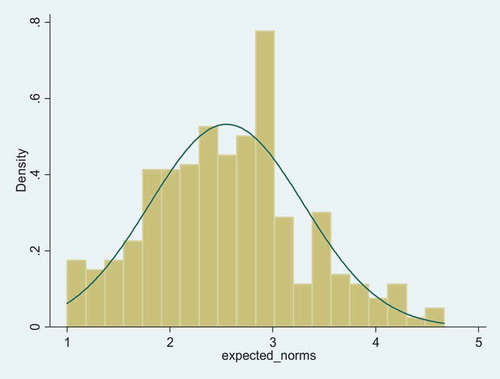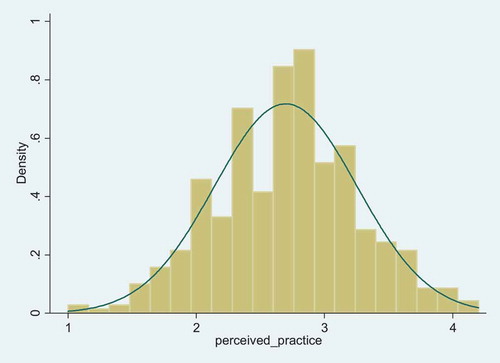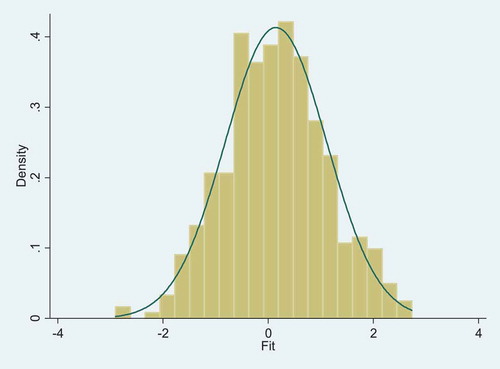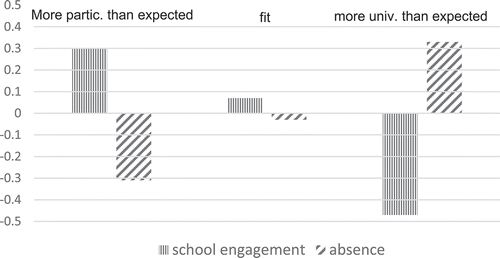Figures & data
Figure 1. Distribution of expected norms by learners in second chance education

Figure 2. Distribution of the perceived practice of teachers in second chance education

Table 1. Correlations between expected norms, perceived practice of teachers, and individual and family characteristics
Figure 3. Distribution of the differences between experienced teacher practice and normative expectations

Table 2. Mismatch of fit and individual and family characteristics (all variables standardised; MW)
Figure 4. School engagement, absences and mismatch of fit

Table 3. Regression of school engagement and absence on mismatch of fit, individual and family characteristics (all discrete variables standardised)
